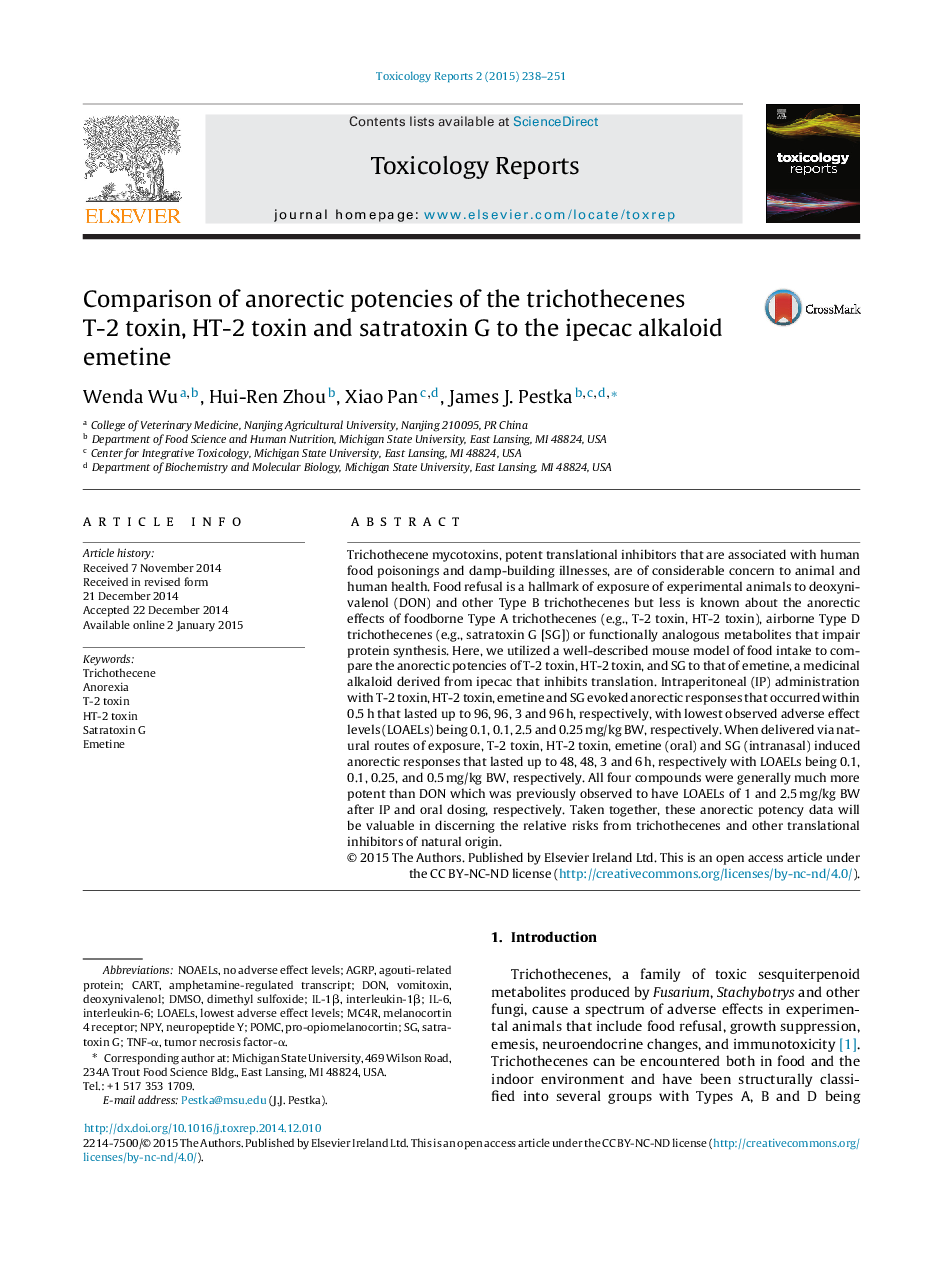| کد مقاله | کد نشریه | سال انتشار | مقاله انگلیسی | نسخه تمام متن |
|---|---|---|---|---|
| 2572212 | 1561192 | 2015 | 14 صفحه PDF | دانلود رایگان |

• Anorectic effects of natural toxins were compared in the mouse.
• Parenteral and oral T-2 and HT-2 toxin exposure caused prolonged anorexia.
• Emetine was more potent when delivered orally as compared to parenterally.
• Emetine's effects were less than T-2 and HT-2 toxin and more transient.
• Parental and intranasal delivery satratoxin G caused transient anorectic effects.
Trichothecene mycotoxins, potent translational inhibitors that are associated with human food poisonings and damp-building illnesses, are of considerable concern to animal and human health. Food refusal is a hallmark of exposure of experimental animals to deoxynivalenol (DON) and other Type B trichothecenes but less is known about the anorectic effects of foodborne Type A trichothecenes (e.g., T-2 toxin, HT-2 toxin), airborne Type D trichothecenes (e.g., satratoxin G [SG]) or functionally analogous metabolites that impair protein synthesis. Here, we utilized a well-described mouse model of food intake to compare the anorectic potencies of T-2 toxin, HT-2 toxin, and SG to that of emetine, a medicinal alkaloid derived from ipecac that inhibits translation. Intraperitoneal (IP) administration with T-2 toxin, HT-2 toxin, emetine and SG evoked anorectic responses that occurred within 0.5 h that lasted up to 96, 96, 3 and 96 h, respectively, with lowest observed adverse effect levels (LOAELs) being 0.1, 0.1, 2.5 and 0.25 mg/kg BW, respectively. When delivered via natural routes of exposure, T-2 toxin, HT-2 toxin, emetine (oral) and SG (intranasal) induced anorectic responses that lasted up to 48, 48, 3 and 6 h, respectively with LOAELs being 0.1, 0.1, 0.25, and 0.5 mg/kg BW, respectively. All four compounds were generally much more potent than DON which was previously observed to have LOAELs of 1 and 2.5 mg/kg BW after IP and oral dosing, respectively. Taken together, these anorectic potency data will be valuable in discerning the relative risks from trichothecenes and other translational inhibitors of natural origin.
Journal: Toxicology Reports - Volume 2, 2015, Pages 238–251